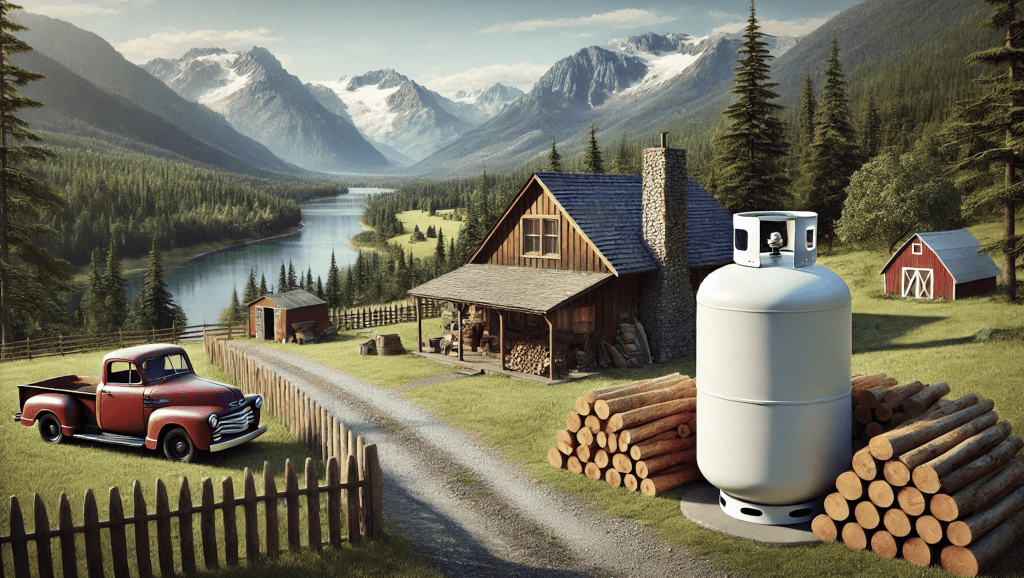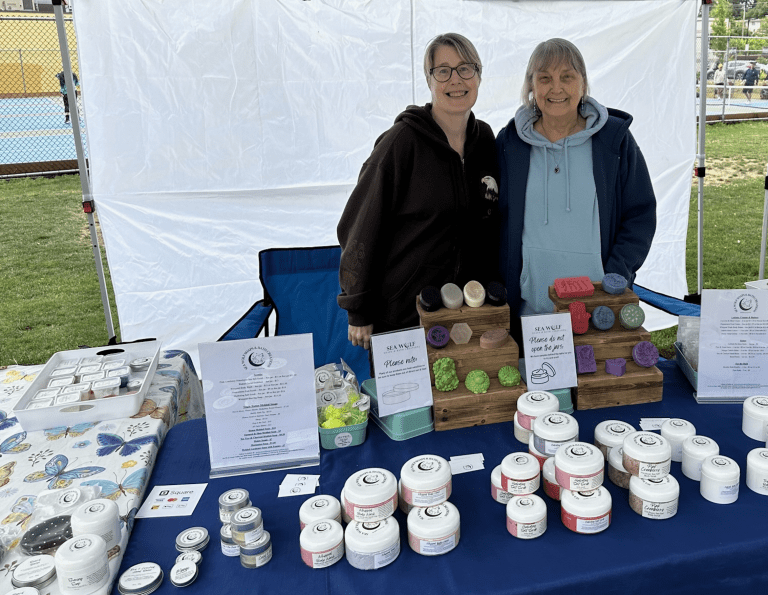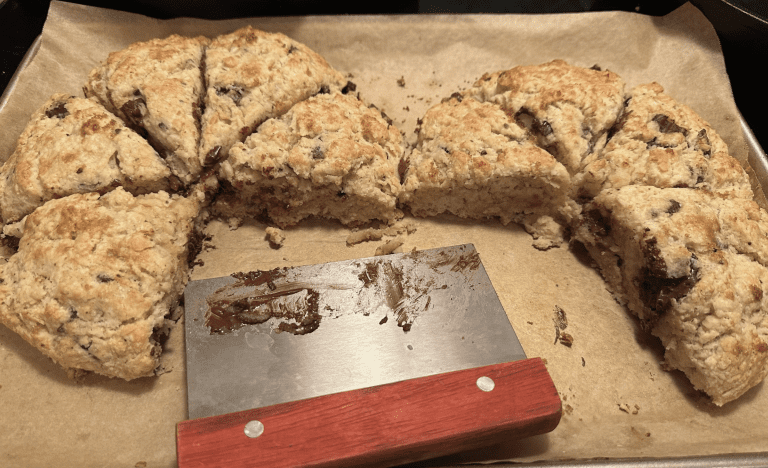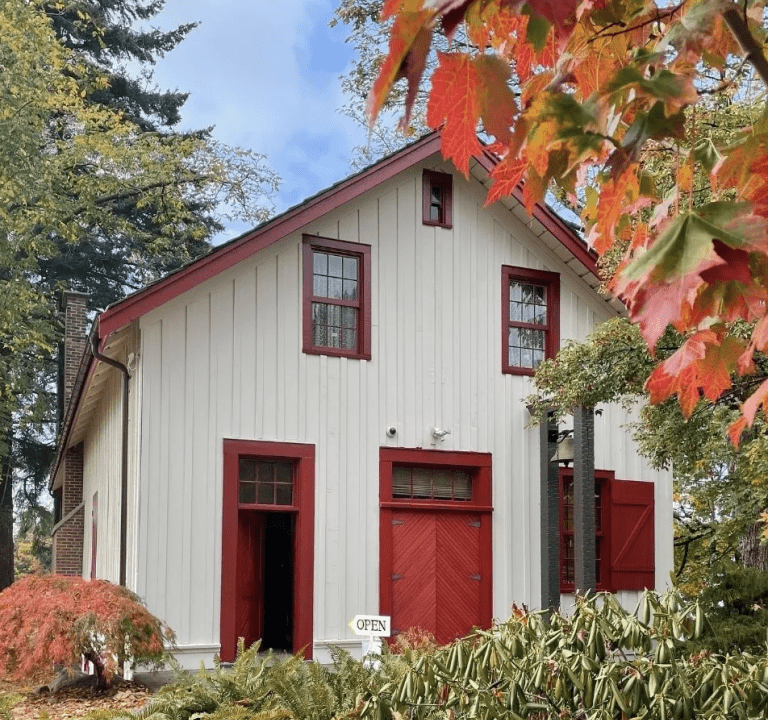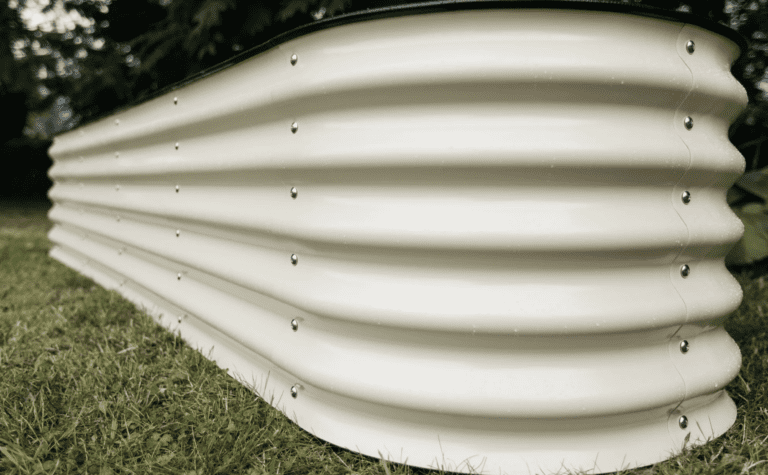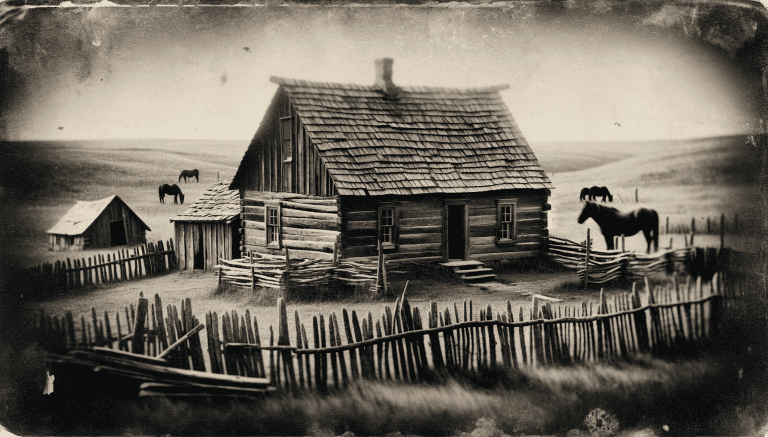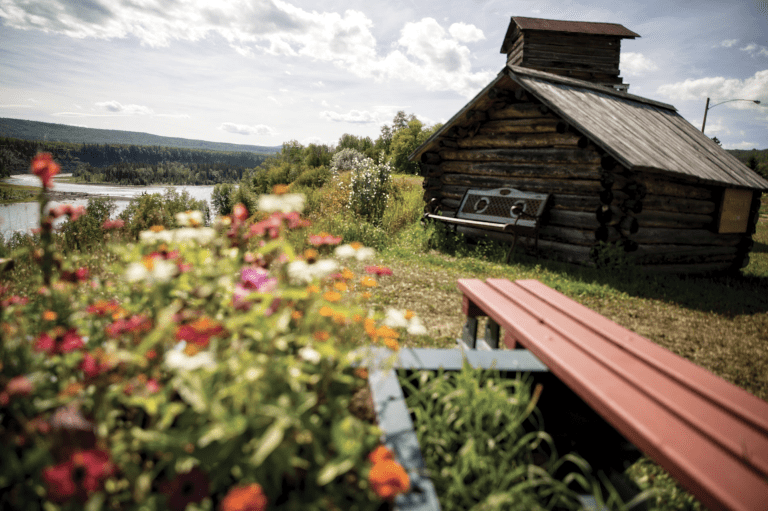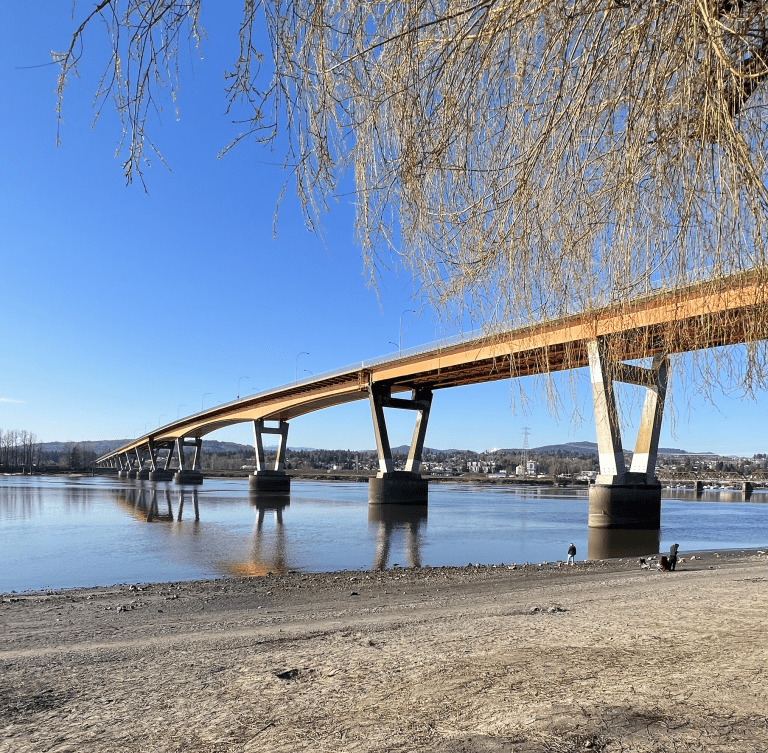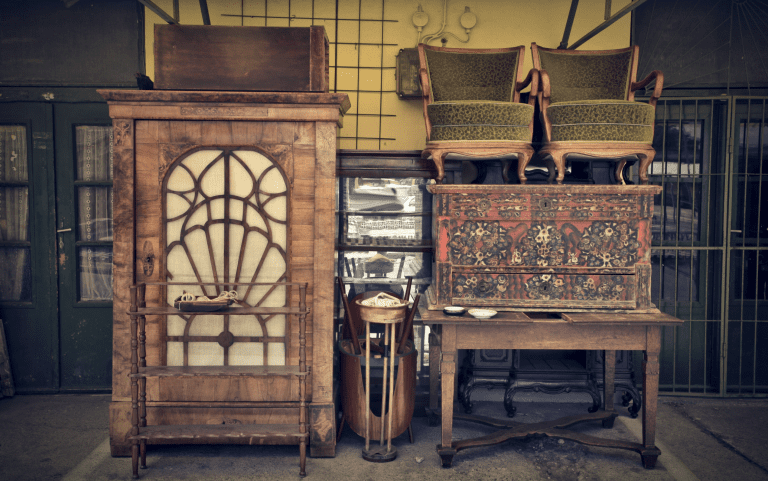At Wild Bluebell Homestead, we understand the importance of reliable and efficient energy sources. Whether you’re heating your home, cooking, or fueling your homestead operations, propane is a versatile and dependable option. This guide explores everything you need to know about propane delivery, tank rentals, installation, and repair services in British Columbia (BC) Canada. We’ll cover the who, what, when, where, why, and how of propane, the benefits of choosing propane over other energy forms, and a bit of the history behind its use in BC. You’ll also find a comprehensive list of propane service providers and local propane companies in BC to help you make the best choice for your homestead.
What is Propane and Why is it Important?
Propane is a hydrocarbon gas (C3H8) that is stored under pressure as a liquid and vaporizes when released for use. Known for its clean-burning properties, propane is a popular choice for residential and commercial services, including heating, cooking, water heating, and powering generators and appliances. Propane is essential in areas where natural gas is unavailable, providing a reliable energy source for off-grid living, homesteads, and rural areas in British Columbia.
Who Uses Propane and When Should You Consider It?
Propane is widely used across BC by homeowners, farmers, businesses, and recreational users. You should consider propane if:
- You live in a rural or off-grid area and need a reliable energy source.
- You want a backup energy source during power outages or emergencies.
- You need a dependable fuel for heating, cooking, or outdoor activities.
- You seek an environmentally friendly alternative to other fossil fuels.
- You’re considering propane for homesteads or off-grid living solutions.
Where Can You Get Propane in British Columbia?
British Columbia has numerous propane companies offering propane delivery, tank rentals, installation, and repair services. Here’s a comprehensive list of local propane businesses to help you find the best service provider for your needs:
- Borealis Fuels
- Burden Propane
- Canadian Propane
- CanGas Propane
- CanCo Propane
- Cariboo Propane
- Columbia Fuels
- Coastal Propane
- Cooper Equipment
- Eagle Propane Sales
- Federated Co-op Propane
- North Star Propane
- Pogo Propane
- Ready Propane
- Sabre Rentals
- Saltspring Propane
- SIS Propane
- Superior Propane
- Super Save Propane
- Vancouver Island Propane
- Viper Fuels
For more information on propane safety and its uses, you can also check out the Canadian Propane Association.
How to Get Started with Propane?
To begin using propane at your homestead, follow these steps:
- Assess Your Needs: Determine the purpose for which you need propane—whether for heating, cooking, propane backup generators, or as a secondary energy source for homestead living.
- Choose a Supplier: Select a propane supplier from the list above based on your location and specific needs. Consider whether they offer propane delivery and the cost of propane services.
- Tank Rental or Purchase: Decide if you want to rent a propane tank or purchase one. Many companies offer flexible rental options and tank maintenance services.
- Installation Services: Arrange for professional propane tank installation services to ensure safety and compliance with local regulations.
- Set Up Delivery and Maintenance: Most companies offer regular delivery services to ensure you never run out of propane. Set up a delivery schedule and consider setting up propane tank inspection and repair services to maintain safety standards.
Safety Regulations and Permits for Propane in BC
Safety is paramount when dealing with propane, and British Columbia has stringent regulations to ensure safe handling and usage. According to Technical Safety BC, propane tanks require operating permits to ensure they meet safety standards. It’s crucial to ensure your propane tank is installed and maintained by certified professionals who comply with all local regulations, including obtaining the necessary permits for operation.
Additionally, FortisBC provides guidelines on propane safety, including regular inspections, proper ventilation, and understanding how to handle potential leaks. Propane safety measures also include installing carbon monoxide detectors and ensuring adequate ventilation when using propane appliances indoors.
Why Choose Propane Over Other Energy Sources?
Propane offers several advantages over other forms of energy:
- Environmentally Friendly: Propane burns cleaner than other fossil fuels, producing fewer greenhouse gas emissions.
- Cost-Effective: Propane is often less expensive than electricity and oil, particularly in rural areas where these utilities are less accessible. It is a great choice for those comparing propane vs electricity or propane vs oil heating.
- Reliable and Versatile: Propane can be stored on-site in large quantities, providing a reliable energy source even during power outages. It can be used for heating, cooking, drying clothes, and more. Propane heating is particularly beneficial during cold weather.
- Energy Efficient: Propane appliances typically have a higher energy efficiency rating than their electric counterparts, translating to savings on your energy bills. Propane water heaters and propane furnaces are examples of high-efficiency appliances.
A Brief History of Propane in British Columbia
Propane has been a key energy source in British Columbia for decades. Initially introduced in the early 19th century as a byproduct of natural gas processing and petroleum refining, propane quickly became popular in areas without natural gas pipelines. Over the years, advances in technology and infrastructure have made propane a safe, reliable, and efficient energy option for homes, businesses, and recreational activities across the province.
Safety, Storage, and Scientific Information About Propane
Propane is a safe and widely used energy source, but it’s essential to understand its properties and safety protocols:
- Chemical Makeup: Propane (C3H8) is a colorless, odorless gas. For safety reasons, an odorant (ethyl mercaptan) is added to detect leaks.
- Storage: Propane must be stored in approved tanks and cylinders designed to withstand the pressures of liquid propane. Proper propane storage regulations must be followed to prevent accidents. Tanks should be regularly inspected for leaks and maintained according to safety guidelines.
- Safety Tips: Ensure proper ventilation when using propane appliances. Install carbon monoxide detectors in enclosed spaces. Familiarize yourself with emergency procedures for dealing with leaks or other propane-related incidents. Always engage professional propane tank repair services if needed.
Wild Bluebell Homestead’s Take on Propane
At Wild Bluebell Homestead, we believe in the benefits of propane heating, especially when used to complement our traditional wood fireplace. Propane provides a convenient and efficient backup, ensuring we stay warm and cozy throughout the colder months without solely relying on wood. Its versatility and reliability make it an indispensable part of our energy strategy. We also appreciate the ability to choose from a range of propane suppliers and services that suit our homestead’s unique needs.
Closing Thoughts
Choosing propane for your homestead in British Columbia Canada is a smart decision, offering reliability, efficiency, and environmental benefits. With various local suppliers providing propane delivery, tank rentals, installation, and repair services, making the switch to propane has never been easier. We encourage you to explore the options listed above, assess your needs, and choose a provider that best suits your homestead’s requirements.
Whether you’re looking for a primary heating source, backup energy solution, or a safe, sustainable option for cooking and water heating, propane offers a flexible, cost-effective, and sustainable energy solution. At Wild Bluebell Homestead, we’re committed to sharing our love for propane and helping you make informed choices for your homestead’s energy needs.
additional resources
Propane Fuelling Station Locator
Canada Energy Regulator
Carbon Tax Rates by Fuel Type
Recycling Council of BC
BC Ferries Protocol
Propane Training Alliance
BC Energy Regulator
Government of Canada
Canadian Energy Centre
Propane Facts Canada
CCOHS
Planning and Understanding Your Propane System Setup
Choosing the right propane system starts with a thorough understanding of your specific needs and the context of your property. Several key factors will influence the type of system you should install:
- Purpose of Use: The primary consideration is what you will be using propane for. Common uses include heating, cooking, water heating, and powering specific appliances such as dryers, refrigerators, and generators. Determining your exact usage helps estimate the amount of propane required and the type and size of the tank needed.
- Property Characteristics: The size and layout of your property are crucial in planning your propane system. Larger properties or those with multiple buildings may require larger or multiple tanks. The layout of your property can also affect where tanks can be installed, especially if considering underground versus above-ground tanks.
- Location and Delivery Logistics: For properties located in rural or off-grid areas, larger tanks may be necessary to minimize delivery frequency and ensure a continuous supply of propane. Accessibility for delivery trucks and local regulations regarding tank placement also play a role in system planning.
- Climate and Seasonal Demand: In colder climates, propane usage tends to increase during the winter months due to heating needs. Understanding local climate conditions allows for more accurate planning of tank size and delivery schedules to ensure you have enough propane during high-demand periods.
- Regulatory Compliance: Ensure you are aware of all local codes, regulations, and permits required for installing propane systems. These rules can dictate the type of tank you can install, where it can be placed, and the safety measures that must be in place.
- Budget and Financial Planning: Consider both the initial costs (such as tank purchase or rental, installation, and any necessary modifications to your property) and ongoing costs (such as propane refills and regular maintenance). This financial planning helps ensure that the system is affordable in the long term.
Choosing the Right Propane Tank for Your Needs
Selecting the right propane tank is a critical decision that will impact the efficiency and convenience of your propane system. Tanks come in various types and sizes, each suited to different uses:
- Above-Ground Tanks: These are the most common type of propane tanks, typically ranging from 120 gallons to 1,000 gallons or more. They are installed on a concrete or gravel pad above the ground. Advantages include lower installation costs, easier access for maintenance, and flexibility in location. However, they are more visible, which may not be aesthetically pleasing for some property owners.
- Underground Tanks: These tanks are buried below the ground, providing a more discreet installation with less visual impact. Sizes also range from 250 gallons to 1,000 gallons or more. While they are more expensive to install due to the excavation required, underground tanks offer better protection from extreme weather and are less vulnerable to damage. They are ideal for properties with colder climates or where aesthetics are a concern.
- Portable Tanks: These smaller tanks, ranging from 5 to 40 pounds, are designed for mobile or temporary uses, such as grilling, camping, or as a backup for small appliances. They are easy to transport and refill but are not suitable for high-demand applications or permanent installations.
When choosing a tank, consider factors such as the available space on your property, aesthetic preferences, safety regulations, and the volume of propane required.
Essential Components of a Propane System
A complete propane system consists of several key components, each crucial for safe and efficient operation:
- Propane Tank: The storage container for propane gas. The size and type of tank will depend on your property’s requirements and usage needs.
- Regulator: A device that controls the pressure of the propane as it flows from the tank to your appliances. Regulators are essential for maintaining safe pressure levels and preventing damage to appliances. There are two main types:
- First-Stage Regulators: Reduce the high pressure from the tank to a lower level for delivery to the second-stage regulator.
- Second-Stage Regulators: Further reduce the pressure to a level that is safe and suitable for your appliances. Two-stage regulation systems provide precise control and are recommended for larger or more complex setups.
- Piping and Fittings: These are the conduits that transport propane from the tank to various appliances. Piping must be made from materials approved for propane use, such as copper, polyethylene, or black iron, and should be installed following local building codes to ensure safety.
- Shutoff Valve: A manual or automatic valve that can stop the flow of propane in an emergency. Proper placement and functionality are crucial for safety and compliance with local regulations.
- Propane Appliances: Devices that use propane, such as furnaces, water heaters, stoves, and dryers. It’s essential to ensure that all appliances are designed for propane use and installed correctly to avoid leaks and inefficiencies.
- Gas Detectors and Carbon Monoxide Detectors: Safety devices that alert you to the presence of propane or carbon monoxide, a potentially deadly byproduct of incomplete combustion. These should be installed in all areas where propane appliances are used.
- Venting System: Proper venting is required for propane appliances to prevent the buildup of harmful gases like carbon monoxide. This is particularly important for indoor appliances like water heaters and furnaces.
Steps for Installing a Propane System
Installing a propane system involves several critical steps to ensure safety and compliance with local regulations:
- Site Assessment and Planning: Begin by evaluating your property to determine the best location for your propane tank and the layout of piping and appliances. Consider factors like distance from structures, accessibility for deliveries, and safety requirements.
- Obtaining Permits and Regulatory Approvals: Check with local authorities to determine what permits and inspections are required. This step is crucial to ensure that your installation meets all safety standards and regulations.
- Choosing a Propane Supplier: Select a reliable propane supplier who offers comprehensive services, including tank rental or purchase, delivery, installation, and maintenance. Consider factors such as pricing, customer service, and emergency support.
- Tank Installation: Depending on the tank type, installation may involve placing the tank on a stable surface (above-ground) or burying it underground. This should always be done by certified professionals who can ensure compliance with safety standards.
- Piping and Appliance Installation: Install the necessary piping from the tank to your propane appliances. Ensure that all connections are secure and that appliances are correctly configured for propane use. This step often requires professional expertise to ensure safety and efficiency.
- System Inspection and Testing: Before using your propane system, have it inspected by a certified technician to ensure that all components are correctly installed and functioning. Testing includes checking for leaks, verifying pressure levels, and ensuring proper venting.
- Setting Up Delivery and Maintenance Services: Arrange for regular propane deliveries based on your estimated usage and set up a maintenance schedule to keep your system in good working order. Regular inspections and maintenance are vital to prevent leaks and ensure safe operation.
Calculating Propane Usage and Managing Supply
Accurately estimating your propane usage is crucial for selecting the right tank size and planning refills:
- Understanding Appliance BTU Ratings: Each propane appliance has a BTU (British Thermal Unit) rating that indicates its energy consumption. This information can usually be found in the appliance’s manual or on its data plate.
- Estimating Usage Time: Calculate the number of hours each appliance is used daily, weekly, or seasonally. Multiply the BTU rating by the estimated usage time to determine the total BTUs required.
- Converting BTUs to Propane Gallons: One gallon of propane provides approximately 91,500 BTUs. Divide your total BTU requirements by 91,500 to estimate the number of gallons needed.
- Adjusting for Efficiency and Weather: Consider appliance efficiency and local weather conditions, which may increase or decrease propane usage. Consult with your propane supplier to refine these estimates and ensure you have adequate supply.
Safety Protocols and Maintenance Requirements
Safety is paramount when using propane, given its flammability and the risks associated with leaks or carbon monoxide poisoning:
- Routine Inspections and Maintenance: Regularly inspect all system components, including the tank, regulators, piping, and appliances, for signs of wear or damage. Schedule annual maintenance checks with a certified technician to ensure everything is in proper working order.
- Leak Detection and Prevention: Use gas detectors to monitor for propane leaks. The distinct odor added to propane (usually ethyl mercaptan, which smells like rotten eggs) helps detect leaks. Immediately address any suspected leaks by shutting off the gas supply and contacting a professional.
- Proper Ventilation: Ensure that all propane appliances have adequate ventilation to prevent carbon monoxide buildup. This is especially important in enclosed spaces like basements or kitchens.
- Installing Safety Devices: Equip your property with carbon monoxide detectors and ensure they are functional and properly maintained. These devices are essential for detecting harmful gases that could pose a danger to occupants.
- Emergency Preparedness: Develop an emergency plan that includes steps for shutting off the propane supply, evacuating the premises, and contacting emergency services. Familiarize all occupants with these procedures to ensure quick and safe responses in case of a leak or other emergency.
Switching to Propane from Another Energy Source
Switching to propane from electricity, oil, or natural gas involves several considerations to ensure a smooth transition:
- Feasibility Assessment: Conduct a thorough assessment with a propane supplier or certified technician to determine the feasibility of switching. This may involve evaluating existing infrastructure, identifying necessary modifications, and understanding potential cost savings.
- Transition Planning: Develop a detailed plan that includes removing or retrofitting old appliances, installing new propane-compatible models, and setting up the necessary propane infrastructure (tank, piping, regulators).
- Updating Utilities and Documentation: Notify utility companies of the change and ensure all relevant documentation and permits are updated. This step may involve coordinating with local authorities to ensure compliance with safety standards.
Choosing a Reliable Propane Supplier
Selecting a reputable propane supplier is essential for a smooth experience:
- Service Range and Offerings: Look for suppliers who offer a full range of services, including tank rental, delivery, installation, and maintenance. Ensure they provide emergency support and have a good reputation for reliability.
- Pricing and Contracts: Compare prices for propane delivery and tank services. Review contracts carefully to understand terms regarding rental fees, delivery schedules, and maintenance requirements.
- Customer Reviews and Reputation: Check customer reviews and ask for references to gauge the supplier’s reliability and customer service quality. A good supplier will have a track record of timely delivery, professional service, and responsive support.
Handling Propane Emergencies
Knowing how to respond in the event of a propane leak or other emergency is crucial:
- Immediate Evacuation: If you smell propane or suspect a leak, immediately evacuate all occupants and pets from the premises.
- Avoid Ignition Sources: Do not use phones, light switches, or other electronic devices that could ignite the gas.
- Shut Off the Propane Supply: If safe to do so, turn off the propane supply at the tank’s shutoff valve to prevent further gas flow.
- Contact Emergency Services and Your Propane Supplier: Call emergency services and your propane supplier from a safe location. Do not re-enter the property until professionals have declared it safe.
By following these guidelines and understanding the technical and logistical considerations of setting up a propane system, you can ensure a safe, efficient, and effective energy solution for your home, business, or homestead.
Regions, Cities, Towns, and Villages of British Columbia
Propane delivery, tank rentals, installation, and repair services are crucial across British Columbia Canada, particularly in regions well-known for tourism, vacations, cabin country, homesteading, and remote off-grid living. From the urban outskirts of the Lower Mainland to the serene Gulf Islands, the expansive wilderness of Northern BC, and the picturesque Thompson Okanagan, many homes and businesses depend on propane for heating and other utilities. Our comprehensive list below breaks down all of the regions, cities, towns, and villages that benefit from and use propane services, covering both popular tourist destinations and the most remote, off-the-beaten-path communities.
Vancouver Island and Gulf Islands
Overview: Vancouver Island and the Gulf Islands are famous for their natural beauty, cultural activities, and outdoor recreation, attracting tourists and seasonal residents. Propane services are crucial, especially in remote and off-grid locations where alternative energy sources are limited.
Key Locations:
- Vancouver Island:
- Victoria, Nanaimo, Courtenay, Comox, Campbell River, Port Alberni, Parksville, Qualicum Beach, Tofino, Ucluelet, Sooke, Duncan, Ladysmith, Sidney, Lake Cowichan, Port Hardy, Port McNeill, Alert Bay, Sointula, Gold River, Tahsis, Zeballos, Cumberland, Bowser, Nanoose Bay, Fanny Bay, Black Creek, Royston, Metchosin, Saanich, Oak Bay, Esquimalt, Colwood, View Royal, Highlands, Langford, Mill Bay, Cobble Hill, Shawnigan Lake, Youbou, Honeymoon Bay, Bamfield, Sayward, Quatsino, Holberg, Winter Harbour, Telegraph Cove: These communities range from urban centers like Victoria to remote villages like Holberg and Quatsino, with many relying on propane due to their isolated locations or off-grid properties.
- Gulf Islands:
- Salt Spring Island, Galiano Island, Gabriola Island, Mayne Island, Pender Island, Quadra Island, Texada Island, Denman Island, Hornby Island, Thetis Island, Lasqueti Island, Saturna Island, Mudge Island, Ruxton Island, Valdes Island, Newcastle Island, Kuper Island, Savary Island: The Gulf Islands are popular for retreats, artist communities, and secluded living. Propane is widely used due to the lack of natural gas infrastructure.
Lower Mainland
Overview: The Lower Mainland is a mix of urban and rural areas with a heavy focus on outdoor activities, farming, and tourism. Propane is essential in more rural and mountainous areas, particularly those on the outskirts of urban centers and in tourism-heavy regions.
Key Locations:
- Metro Vancouver:
- Vancouver, Richmond, Burnaby, Surrey, Langley, Coquitlam, New Westminster, Delta, White Rock, Port Moody, North Vancouver, West Vancouver, Pitt Meadows, Maple Ridge, Port Coquitlam, Anmore, Belcarra: While these areas are more urbanized and use natural gas, propane is still important in certain semi-rural neighborhoods and for specific businesses.
- Fraser Valley:
- Abbotsford, Chilliwack, Mission, Hope, Agassiz, Harrison Hot Springs, Kent, Rosedale, Yarrow, Cultus Lake, Vedder Crossing, Deroche, Dewdney, Hatzic, Lake Errock, Laidlaw, Popkum, Spuzzum, Boston Bar, North Bend, Yale, Sunshine Valley: This region includes a mix of urban areas and more remote communities. Propane is used for heating, especially in areas like Sunshine Valley and around Harrison Hot Springs.
- Sea to Sky Corridor:
- Squamish, Whistler, Pemberton, Lions Bay, Britannia Beach, Bowen Island, Furry Creek, Garibaldi Highlands, Brackendale, Mount Currie, D'Arcy, Birken, Pinecrest Estates, Black Tusk Village, Whistler Creekside, Alpine Meadows: A popular area for tourists year-round, with many off-grid or semi-rural properties relying on propane for heating and cooking.
Thompson Okanagan
Overview: The Thompson Okanagan region is a hub for tourism due to its warm climate, vineyards, lakes, and outdoor recreational activities. Many properties, particularly vacation homes and remote cabins, depend on propane for energy needs.
Key Locations:
- Okanagan Valley:
- Kelowna, Vernon, Penticton, West Kelowna, Lake Country, Peachland, Summerland, Naramata, Osoyoos, Oliver, Coldstream, Oyama, Lumby, Cherryville, Fintry, Falkland, Winfield, Ellison, Gallagher's Canyon, Big White Ski Resort, Carmi, Beaverdell, Rock Creek, Midway, Westbridge: Known for wineries and lakeside tourism, these areas often require propane, particularly in remote and rural properties.
- Shuswap:
- Salmon Arm, Sicamous, Sorrento, Chase, Enderby, Blind Bay, Tappen, Anglemont, Celista, Magna Bay, Scotch Creek, Lee Creek, White Lake, Canoe, Malakwa, Grindrod, Mara, Sunnybrae, Eagle Bay, Seymour Arm: A popular region for houseboats and lakeside cabins where propane is essential for heating, cooking, and other utilities.
- Similkameen Valley:
- Keremeos, Princeton, Cawston, Hedley, Tulameen, Coalmont, Olalla, Bromley Rock, Eastgate, Allison Lake, Hayes Creek: A region known for agriculture and remote cabin properties, with propane widely used for heating and cooking.
- Thompson-Nicola:
- Kamloops, Merritt, Clearwater, Ashcroft, Cache Creek, Lytton, Spences Bridge, Savona, Logan Lake, Barriere, Little Fort, Blue River, Vavenby, Monte Creek, Pinantan Lake, Heffley Creek, Sun Peaks, Pritchard, Westwold: A diverse area with a mix of urban centers and remote rural communities where propane is crucial, particularly in colder, more mountainous regions.
Kootenay Rockies
Overview: This region, known for its stunning mountain scenery, hot springs, and outdoor adventure opportunities, has numerous remote communities and vacation properties that rely on propane for heating and other utilities.
Key Locations:
- East Kootenay:
- Cranbrook, Kimberley, Fernie, Invermere, Radium Hot Springs, Sparwood, Elkford, Fairmont Hot Springs, Canal Flats, Windermere, Panorama Mountain Resort, Wasa, Fort Steele, Moyie, Yahk, Grasmere, Wardner, Roosville, Jaffray, Hosmer: Popular for skiing, hiking, and hot springs, many properties in these areas are off-grid or remote, using propane for energy needs.
- West Kootenay:
- Nelson, Castlegar, Trail, Rossland, Kaslo, Nakusp, New Denver, Silverton, Slocan, Salmo, Fruitvale, Montrose, Ymir, Crescent Valley, Winlaw, Passmore, Argenta, Riondel, Ainsworth Hot Springs, Burton, Edgewood, Fauquier, Beaton, Galena Bay: Known for artsy communities and access to outdoor recreation, many homes in these mountainous areas use propane.
- Revelstoke Area:
- Revelstoke, Golden, Rogers Pass, Glacier, Malakwa, Mica Creek, Trout Lake, Beaton, Galena Bay, Arrowhead: Popular for backcountry skiing and adventure tourism, with many remote cabins and lodges depending on propane.
Cariboo Chilcotin Coast
Overview: The Cariboo Chilcotin Coast is rich in history, with rugged wilderness and remote lodges. This region is less populated, with a higher reliance on propane due to the absence of extensive natural gas infrastructure.
Key Locations:
- Cariboo:
- Williams Lake, Quesnel, 100 Mile House, 108 Mile Ranch, 70 Mile House, 93 Mile House, 105 Mile House, Lac La Hache, Clinton, Cache Creek, Horsefly, Likely, Big Lake Ranch, McLeese Lake, Bridge Lake, Sheridan Lake, Lone Butte, Canim Lake, Forest Grove, Mahood Falls, Hawkins Lake, Tatla Lake, Alexis Creek, Nimpo Lake, Anahim Lake: This area includes historic towns and rural communities, many of which rely on propane for heating.
- Chilcotin:
- Bella Coola, Hagensborg, Firvale, Anahim Lake, Nimpo Lake, Kleena Kleene, Tatlayoko Lake, Puntzi Mountain, Alexis Creek, Redstone, Chilanko Forks, Riske Creek: Remote communities in the Chilcotin Plateau, where propane is often the primary source of energy.
- Coast:
- Bella Bella, Ocean Falls, Shearwater, Denny Island, Oweekeno (Rivers Inlet), Kimsquit: Isolated coastal communities with limited access to alternative fuels, making propane crucial for residential and commercial use.
Northern British Columbia
Overview: Northern BC is vast and rugged, with a sparse population spread across large distances. Propane is vital for residential heating and commercial use, especially in tourism-heavy areas and for seasonal properties.
Key Locations:
- Northwest BC:
- Prince Rupert, Terrace, Kitimat, Smithers, Stewart, Hazelton, New Hazelton, South Hazelton, Masset, Queen Charlotte, Sandspit, Port Edward, Telegraph Creek, Dease Lake, Atlin, Iskut, Gitanyow, Gitlaxt’aamiks (New Aiyansh), Gitwinksihlkw, Laxgalts’ap (Greenville), Gingolx, Tahltan, Telegraph Creek, Cassiar, Telegraph Creek, Nisga'a Village, Old Massett: These communities are known for their rugged beauty and remote locations. Propane is often used in lieu of natural gas due to limited infrastructure.
- Northeast BC:
- Fort St. John, Dawson Creek, Fort Nelson, Tumbler Ridge, Chetwynd, Hudson's Hope, Taylor, Pouce Coupe, Pink Mountain, Prophet River, Wonowon, Buick, Prespatou, Goodlow, Charlie Lake, Farmington, Groundbirch, Blueberry River First Nations, Halfway River First Nations: This region is heavily involved in the oil and gas industry, but many outlying and rural properties use propane for heating and cooking.
- Central BC:
- Prince George, Burns Lake, Vanderhoof, Fraser Lake, Fort St. James, Mackenzie, Valemount, McBride, Telkwa, Houston, Granisle, Topley, Fort Babine, Takla Landing, Bear Lake, Dome Creek, Crescent Spur, Penny, Sinclair Mills, Giscome, Willow River, Hixon, Red Rock, Shelley, Mud River, Blackwater, West Lake: A diverse area with both urban and remote rural communities; propane is widely used, especially in colder climates and more isolated locations.
Sea to Sky Corridor
Overview: This scenic corridor connects Vancouver to the interior and is famous for its outdoor sports, cultural festivals, and breathtaking landscapes. Many properties are located in mountainous areas or off the main grid, making propane a necessary utility for heating and cooking.
Key Locations:
- Sea to Sky:
- West Vancouver, Squamish, Whistler, Pemberton, Lions Bay, Britannia Beach, Bowen Island, Furry Creek, Garibaldi Highlands, Brackendale, Mount Currie, D'Arcy, Birken, Pinecrest Estates, Black Tusk Village, Whistler Creekside, Alpine Meadows, Creekside Village: Popular among tourists and outdoor enthusiasts, with many seasonal cabins and residences that rely on propane due to the remote nature of some properties.
Other Notable Regions and Remote Areas
Overview: These regions include remote, lesser-known communities and areas known for their unique tourism appeal, such as indigenous heritage sites, fishing lodges, and adventure tourism. Propane is a crucial utility for daily living due to limited access to other energy sources.
Key Locations:
- Notable Remote Areas:
- Telegraph Creek, Gitanyow, Hartley Bay, Oweekeno (Rivers Inlet), Klemtu, Nass Camp, Old Massett, Port Clements, Sandspit, Kyuquot, Zeballos, Ocean Falls, Rivers Inlet, Shearwater, Denny Island, Bella Bella, Kingcome Inlet, Alert Bay, Sointula, Winter Harbour, Holberg, Quatsino, Kitkatla, Hartley Bay, Gwa'Sala-'Nakwaxda'xw (Port Hardy), Ahousaht, Esowista, Hesquiaht, Huu-ay-aht, Opitsaht, Tla-o-qui-aht, Tsaxana, Kitasoo/Xai'xais: These remote and often indigenous communities rely heavily on propane due to their isolation and limited infrastructure, making it an essential service for both heating and cooking.
This expanded and detailed breakdown includes nearly all regions, cities, towns, and villages in British Columbia that benefit from propane services, focusing on tourism and off-grid properties. The list is designed to be as comprehensive as possible, ensuring no significant location is overlooked.

